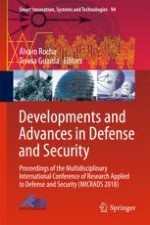This book includes a selection of articles from The 2018 Multidisciplinary International Conference of Research Applied to Defense and Security (MICRADS’18), held in Salinas, Peninsula de Santa Elena, Ecuador, from April 18 to 20, 2018. MICRADS is an international forum for researchers and practitioners to present and discuss the most recent innovations, trends, results, experiences and concerns in the various areas of defense and security, together with their technological development and applications.
The main topics covered are: Information and Communication Technology in Education; Computer Vision in Military Applications; Engineering Analysis and Signal Processing; Cybersecurity and Cyberdefense; Maritime Security and Safety; Strategy, Geopolitics and Oceanopolitics; Defense planning; Leadership (e-leadership); Defense Economics; Defense Logistics; Health Informatics in Military Applications; Simulation in Military Applications; Computer Networks, Mobility and Pervasive Systems; Military Marketing; Military Physical Training; Assistive Devices and Wearable Technology; Naval and Military Engineering; Weapons and Combat Systems; Operational Oceanography.
The book is aimed at all those dealing with defense and security issues, including practitioners, researchers and teachers as well as undergraduate, graduate, master’s and doctorate students.
